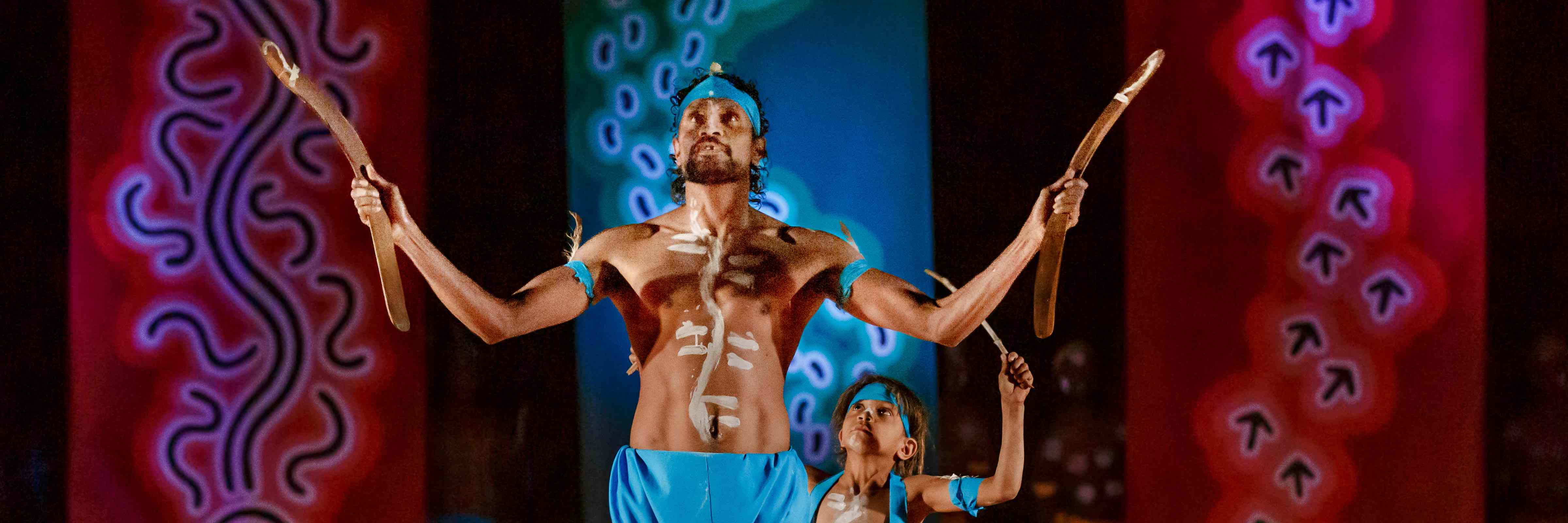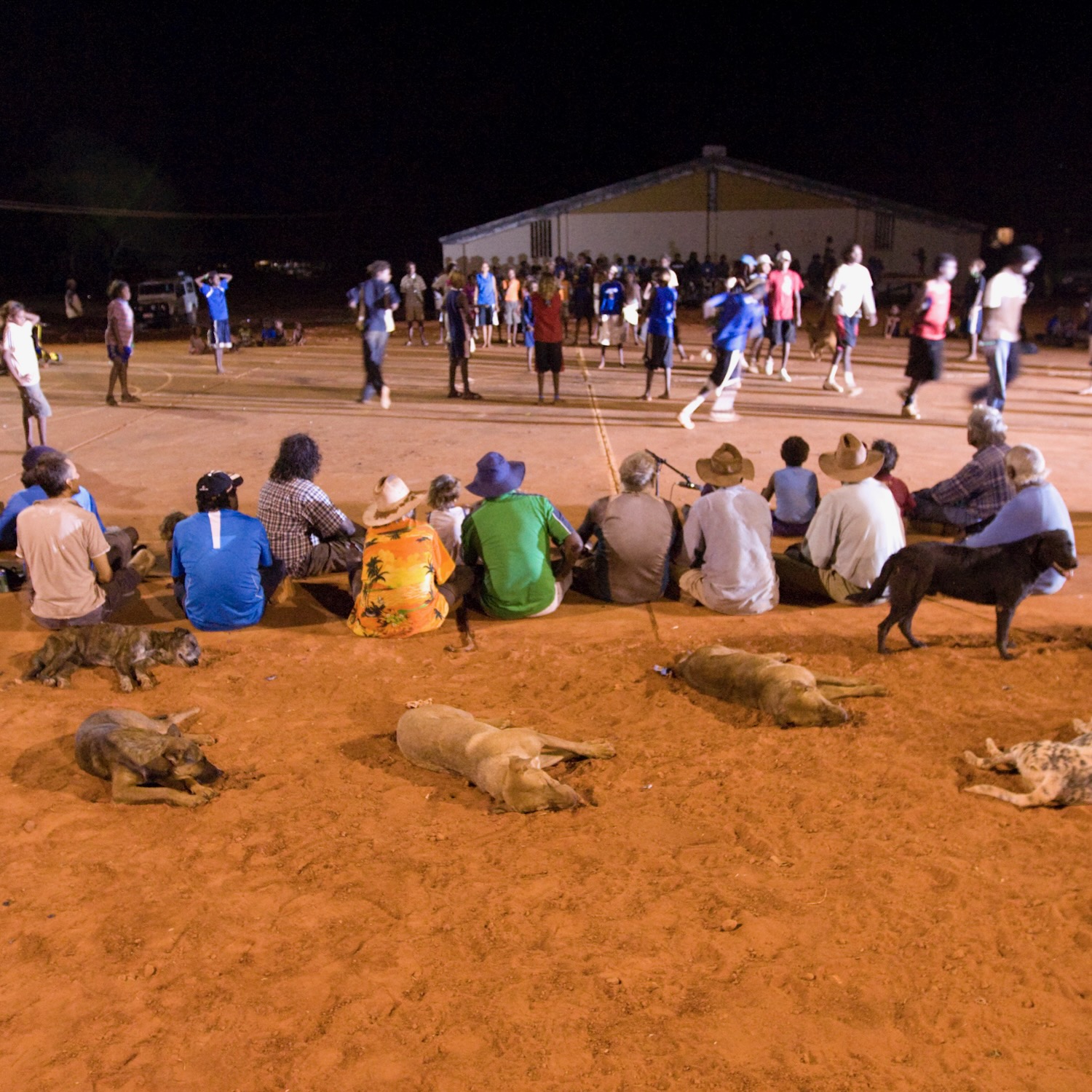Lajamanu / Milpirri (Indigenous)
Milpirri Festival
Milpirri is a bilingual, bicultural celebration presented by the people of Lajamanu (a remote desert community) and Tracks, the Northern Territory's premier dance company (based in Darwin).
Every two years, on the eve of the wet season, the Lajamanu community and Tracks Dance Company come together under the stars of the desert sky. Through dance, music and spectacular visual imagery the energy of the youth and the wisdom of the old come to life.
Milpirri Creative Director, Steve Wanta Jampijinpa Patrick, says the purpose of Milpirri is to “enliven tradition for an intercultural twenty-first-century future”.
Artistic Directors: Tim Newth and David McMicken
The performance typically involves over 150 community members including singing elders, painted up adult men and women, hip hop dancing youth and students from the Lajamanu school. Those in the community who are not performing will come to watch.
Milpirri Festival has a focus on health, wellbeing, learning, cultural identity and cultural enactments. Behind the scenes, Tracks spends months in the community sharing and preparing for the performance.
Watch a snapshot of the 2016 Milpirri- Kurdiji performance
Lajamanu on the edge of the Tanami Desert
Lajamanu is an Aboriginal community about 960 kilometres southwest of Darwin in semi-arid country on the edge of the Tanami Desert. With a population of approximately 760*, it is predominantly inhabited by Warlpiri people (90% of the community are Indigenous) and is on Gurindji land. Warlpiri is the language spoken at home (79%).
2021 Figures



